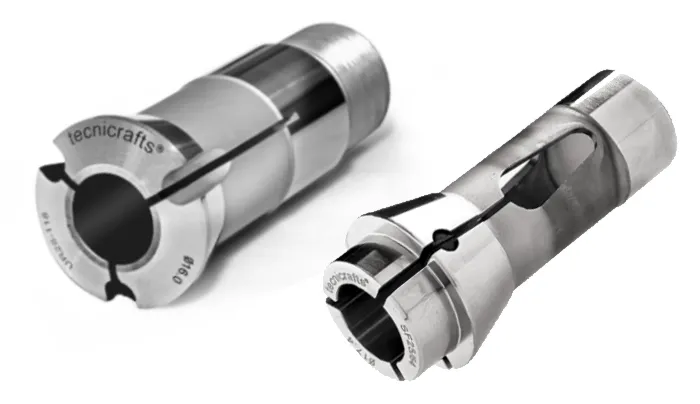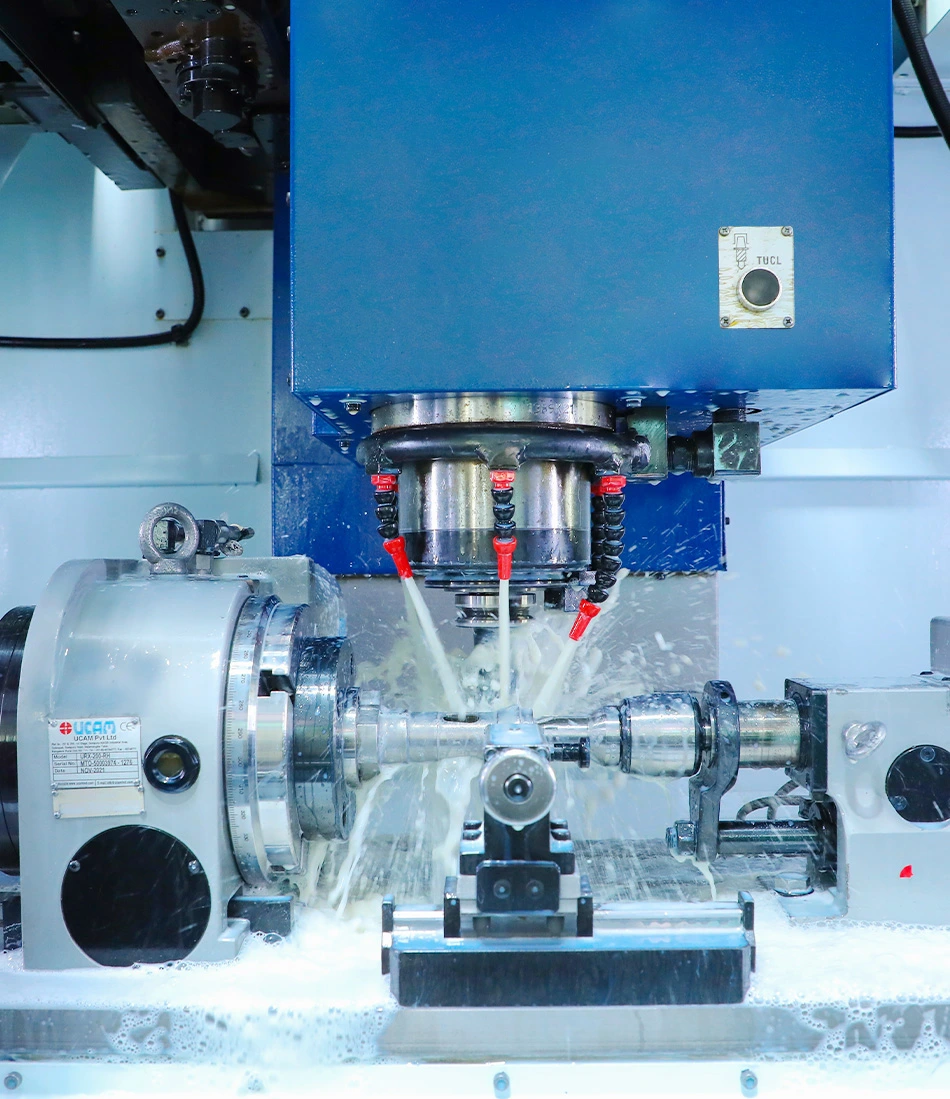Blog
About us
What is a Collet and Guidebush
A collet is a clamping device that is used to hold an geometrical object in a machine tool, such as Lathe, Milling, Grinding machine etc., Generally there are two type of Collets namely WORK Holding & TOOL Holding. In each type there are different sub types of collets viz., Dead Length (F-Type) Collets, ER (Type-E) collets, W, B. L-type collets that are generally used for holding the work or Tool while performing a machining operation.
It consists of a cylindrically ground shank and tapered cone with 3 or 4 equally spaced slits that runs through until cylindrical shank. This cylindrical shank and cone fits inside a matching tapered outer sleeve. When the outer sleeve is moved axially the force applied on the cone & the petals clamps the Tool / Object. This allows the collet to securely hold the object in place while machining or other operations are performed on it.
With a dead-length chuck, the collet is fixed to the chuck body, and a tapered sleeve pushes forward over the collet to compress it . Because there is no axial movement of the collet with this design, workpiece positioning remains secured.


Dead length collets are used in the main and sub spindle . The collets can be installed in various types of machines, such as Turning machines, Sliding headstock automatic lathes, Swiss-type CNC Lathes, Multi-spindle machines, Conventional lathes, Cam-controlled lathes, Transfer machines and in special purpose machine constructions
A Guide bush, on the other hand, is a cylindrical piece like collet with carbide lining that is used to guide or stabilize raw material as it moves through in/out of Guidebush. In other words, this is similar to work steady in typical conventional lathe.
Guide bush is made of Special steel and the Bore is lined with a wear-resistant material such as carbide or ceramic. The carbide and ceramic liner act a Bearing and guides the rod in & out as the Sliding head moves the Raw material while machining. The guide bush helps to reduce friction, vibration, minimize ovality, and improve the accuracy and surface finish of the machined parts.
Here are few information about collets and guide bushes
Both collets and guide bushes are commonly used in the manufacturing and machining industry to hold and guide raw material as they are being worked on. They are available in a range of sizes, shapes and types to suit different applications, and are typically designed to be used with specific tools or machines.
Collets are used to hold a wide range of parts, including drill bits, reamers, taps, and other cutting tools, as well as workpieces such as rods, tubes, and pipes. They are particularly useful for holding small or delicate parts that might be damaged if clamped directly in a machine's conventional chuck.

There are several types of collets bores available, including round, hexagon, square and special shapes. Some collets, such as ER collets, can be adjusted to hold parts of different sizes within a range by tightening or loosening the clamping force. Whereas the Dead length collets, W, B, L type Collets holds only specific diameters as they are intended to use for repeated accuracy on High production machines
Guide bushes are used only on Swiss type CNC lathes manufactured and sold under the brand name of Citizen, Star, Tsugami, Hanwha, Tornos, Manurhin, Nomura, Nexturn, Polygim, Doosan, Hardinge,
The Guide bush is used to guide and support raw materials for long and slender turning of high precision components in huge volumes 24x7days. The typical components that are produced using guide bushes on Swiss CNC machines includes Watch components, Connector parts, Dental, Medical implants, screws, Automobile parts, Textile parts, Aerospace and defence components etc.,
Both collets and guide bush form the Heart of Swiss cnc machines. They are made in Standard and Ultra Precision Grade accuracies to suit high precision turning. Collets & Guide bushes require careful handling and maintenance to ensure that they function correctly and last for a long time. They should be handled with care to avoid damage and should be inspected regularly for wear or damage. If necessary, they should be replaced to maintain their performance

